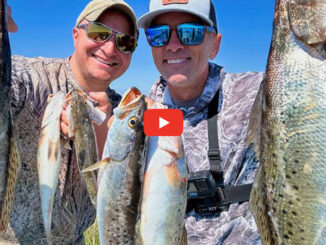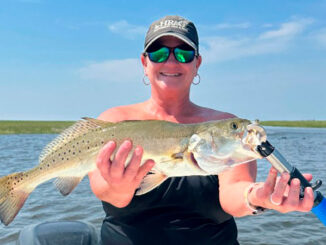
Choose the cork that creates the sound most appropriate for your conditions
The one thing that has surprised me over my years of writing about Louisiana saltwater fishing is how complicated something as simple as a popping cork can be.
I mean, it’s a popping cork. What more can be said other than tie one on and go fishing?
But I’ve been with charter captains out of Venice who were catching five fish to my one.
I’ve fished speckled trout at Lafitte and watched my cork bobbing peacefully on top of the water while my guide’s cork continually disappeared beneath its surface.
And what’s the deal with clip-on corks versus pre-rigged corks? I’ve seen one work when the other wouldn’t, only to watch them completely swap places the next day.
According to Captain Theophile Bourgeois with Bourgeois Fishing Charters (neworleansfishing.com) out of Lafitte, one of the most important things anglers fishing popping corks should consider is the sound each kind makes.
“You’ve got your cupped corks, your egg corks, and pencil corks,” Bourgeois said. “Each one makes a different sound, and sometimes trout will show a definite preference of one sound over the other two. The cupped corks make a bloop-splash sound, the egg corks make more of a pop-splash, and pencil corks make a tick-splash.”
In Bourgeois’ estimation, if we can tell the difference between the sounds, he’s certain fish can, too.
That’s why Bourgeois keeps all varieties of corks in his boat.
“You never know what situation you’re going to run into,” Bourgeois said. “Say you’re out trout fishing on a reef in Barataria Bay in 80-degree water. The trout are all in a frenzy feeding on shrimp. An egg cork might be the ticket because it sounds more like shrimp skittering across the water.”
Egg corks also have the added benefit of keeping up with aggressively feeding trout because they’ll skip 10 inches or more across the surface and yank a soft plastic or live shrimp along for the ride. That creates the look of a shrimp that flicks and then drops.
As for the cupped popping corks, Bourgeois believes they are the right choice when trout aren’t as aggressive.
“The scooped corks keep your bait in the strike zone longer,” he said. “When trout aren’t aggressively feeding, these corks will pull them over with the sound, and they’ll find your bait still hanging there when they get to the sound because it might only move 2 or 3 inches with each pop.”
Bourgeois considers cupped popping corks to be a power-finesse form of fishing that works better in colder water or when trout are in a funky mood. By popping them aggressively and allowing them to sit a while between pops, you can entice fish that can’t resist a bait falling right in front of their faces.
“Fish that aren’t actively up chasing bait, if you fish an egg cork on them, you’ll pull your bait right out of the strike zone before they even get a chance see what’s hanging beneath your cork,” Bourgeois said.
If egg corks are power fishing and cupped corks are power-finesse fishing, pencil corks have to be considered sneaky fishing.
“Pencil corks are very subtle and more suited for the winter months,” Bourgeois said. “That’s the time of year they want smaller baits and very subtle presentation. I don’t use them when the fish are up and feeding once things start warming up in May.”
Whether you choose an egg cork or a cupped cork, the typical set up for May and the rest of summer is to fish your baits about 18 to 24 inches below your cork.
If you know you’re near fish but don’t get bit on an egg cork this month, switch out corks until you find the one that will turn on the trout.
“If you’ll start thinking about corks as an attractant rather than a float, it will force you to start fine tuning your selection until you get it right,” Bourgeois said.
Editor’s Note: This is the third article in a weeklong series by Chris Ginn on effective speckled trout fishing techniques to try this month. Yesterday he highlighted the drop-shot rig. Tomorrow he’ll feature the popping cork.


